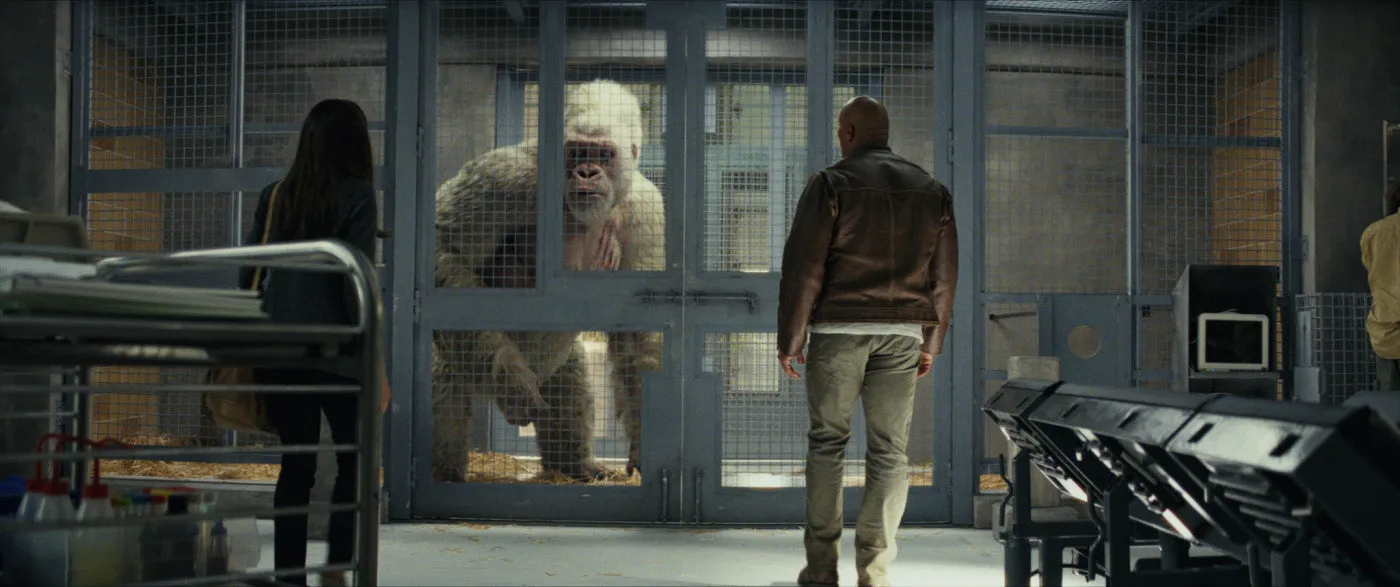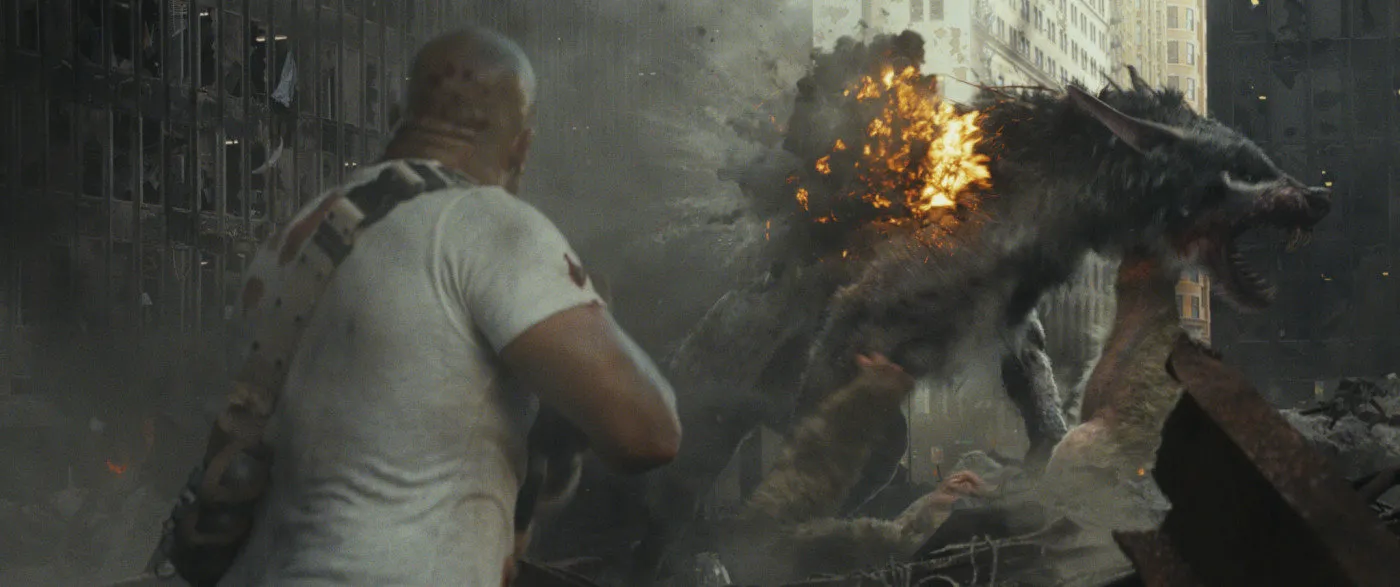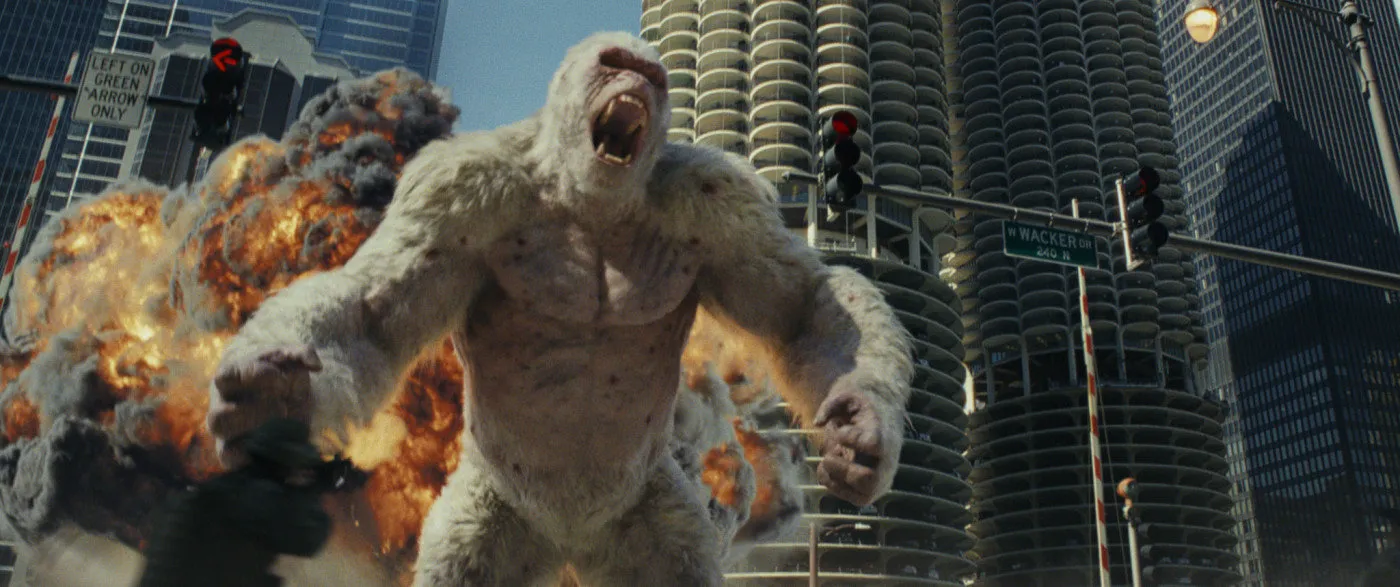Relying Solely on Special Effects and Dwayne Johnson’s Charisma: An Adventure Action Film About Mutated Animals Turned into Mythical Monsters.
Davis, a retired special forces operative disillusioned with people, dedicates himself to animals. In a California national park, he monitors the gorilla population, led by the intelligent albino silverback, George. Secret genetic experiments conducted by a greedy corporation lead to a terrible disaster. George undergoes a mutation, drastically increasing in size and becoming uncontrollable and ferocious. As Davis tries to figure out how to help his furry friend, two more overgrown beasts appear across the country. A pathogen transforms a wolf and an alligator into monsters, and now three giant animals threaten the safety of Chicago. The army is powerless against the agile and nearly invulnerable creatures, but Davis doesn’t lose hope of restoring reason to George, who is demolishing skyscrapers.

It’s arguably a career achievement when viewers and critics alike can predict the kind of film they’re about to see based solely on one name in the credits. Few attain such fame – Nicholas Cage, Bruce Willis, and, arguably, Jason Statham come to mind – but this list is bound to grow, and Dwayne Johnson has become just as “predictable.” This isn’t necessarily a bad thing; studios highly value predictability, and audiences are happy that the actor has found a specific on-screen persona that he rarely deviates from. However, this fixation unfortunately turns any analysis of The Rock’s new works into a concise “It’s a movie starring Johnson,” leaving little room for serious, in-depth discussion.

Shortly before the release of “Rampage,” director Uwe Boll threatened WB with a lawsuit for using the title. Boll had already released a trilogy of action films under the same name (“Rampage”), and the controversial filmmaker believed that the new film would mislead his fans.
Familiar Territory
The new adventure action film “Rampage” simultaneously resembles almost all of The Rock’s previous films. It features the mass destruction of “San Andreas,” the impressive stunts of the “Fast & Furious” franchise, battles with mysterious creatures from “Journey 2,” the humor of “Jumanji,” and, of course, the actor’s signature charm, which he freely uses in every scene. No, it’s not a cheap compilation; “Rampage” does have its own plot, but the filmmakers seem to have decided not to fix what isn’t broken. If you have Dwayne Johnson, it’s enough to put him among the rubble in a heroic pose, and the job is done – profit in your pocket.

Monster Mayhem
To be fair, the creators of “Rampage” hedged their bets. In case audiences got tired of The Rock, computer-generated monsters, as colossal as they are ridiculous, are brought to the screen. The film is a very loose reference (one hesitates to call it an “adaptation”) to the old arcade game of the same name, where characters turned into giant gorillas, wolves, and lizards and went on a skyscraper-destroying rampage. However, this doesn’t excuse the filmmakers – “Rampage” is spectacularly silly and utterly unscientific. But viewers don’t care about biology when watching such films; they want grandiose battles and large-scale destruction.

“Rampage” delivers on this front. If you’re expecting action, there’s plenty of it. The third act, unlike many more modest productions, stretches for a good hour, during which so much explodes, falls, and thunders that there’s no time to think about the meaning and logic of what’s happening. “Rampage” is like “Transformers,” but with animals instead of robots – lots of spectacular crashes, shootouts, and chases, but minimal thought. Even the local scientists spout nonsense, let alone the soldiers, “cowboys,” and other people who don’t particularly understand the meaning of the word “pathogen.”

Actor Jason Liles played the role of the gorilla George using motion capture technology. This required special effects specialists to use 32 special video cameras, a unique suit developed specifically for the film, and consultations with real biologists.
Missed Opportunities
Furthermore, the film doesn’t want to be just an action movie, but it lacks the depth to be anything more. In the episode of the first meeting with the wolf, a decent horror vibe emerges, but this atmosphere of horror quickly dissipates. The Rock tries to joke a couple of times, but it comes across as awkward, formulaic, and, in the end, terribly vulgar. The comedic part, handled by Jake Lacy and Malin Akerman, is completely useless – they turned their scenes into a circus, which is particularly inappropriate against the backdrop of falling skyscrapers, which still remind Americans of the tragedy of 9/11.
The combination of all these elements makes “Rampage” a spectacle, but not art. It’s not a film, but an attraction, and a high-quality one at that, but just as meaningful as a roller coaster ride. The Rock decided at some point that his place is in such films – where he needs to play not with his face and eyes, but with his torso and biceps, where drawn monsters replace logic, and a green backdrop allows you to draw any scenery, where the viewer will remember not the moral, but a bawdy joke. What can you do? It’s his choice. It’s impossible to stop Johnson anyway – neither tsunamis nor crocodiles could cope. Next up is “Skyscraper,” about which everything is already clear: “A film starring Dwayne Johnson, and that says it all.”